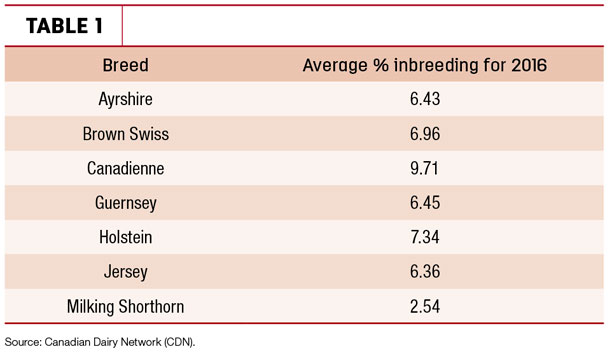1. Official record
When an animal is registered with a breed association, an official record, similar to a birth certificate, is created. This outlines the date of birth (age verified through breeding information), the sire and dam, the purebred status, coat colour and the animal’s registration number.
The registration number contains the breed, the country code (Canada is represented by CAN or 124), the sex of the animal and the unique individual lifetime identification number.
2. Traceability
Registration has a unique traceability benefit, as some breed associations will pass the calves’ information to the Canadian Cattle Identification Agency or Agri-Traçabilité Québec.
Registration provides reporting tag activation for the proAction program (confirm with your breed association) and helps eliminate one step on the farm for the producer.
An animal can be registered as purebred, a purity percentage or a base animal.
For example, a purebred occurs when a female is at least 94 percent Holstein or when a bull is minimum 97 percent Holstein in the herdbook scale.
If an animal is below purebred purity, but the information regarding the dam and sire is known, it is expressed as a percentage of purity.
A base animal occurs when the dam, sire or birthdate information is unknown. Once a base animal is bred to a known bull, the offspring will start to gain in purity through generations.
3. Genetic evaluations
Animals registered as purebred or as a percentage pure are eligible for a variety of services a base-registered animal would not find beneficial.
These benefits include family pedigrees and genomic evaluations, which are a distinct advantage when mating considerations are made.
Animals registered as base have no known parentage and therefore will not have any information for genetic evaluations or pedigrees, thereby prohibiting a clear mating program.
Once an animal has been registered, the animal information is sent to the Canadian Dairy Network (CDN), where a genetic evaluation for the animal is performed.
The genetic evaluation outlines the animal’s projected performance. The predicted performance of the animal shows where its strengths and weaknesses lie, allowing the producer to make more informed breeding decisions.
Genetic evaluations include information on production, conformation, functional traits and national indexes. When looking at a genetic evaluation, it is important to note the reliability of the evaluation, a term used to identify accuracy of the information.
As the animal gets older, and we learn more about it, the reliability will increase. This increase is due to the addition of performance data, such as classification scores, publishable milk records and progeny data.
Most non-genotyped animals start with a reliability of around 33 percent, while those genotyped start around 70 percent.
4. Accurate history and pedigrees
Registered animals may receive a detailed and accurate animal history. This is provided through animal pedigrees which contain the production records, conformation records, birthdates, genetic traits and recessives.
Detailed family histories can be used for mating, familial identification and marketing; they are a great way to receive a clear and concise snapshot of the cow’s history.
5. Minimize inbreeding
Both registrations and genetic evaluations also provide the inbreeding levels of an animal. The national level of inbreeding varies per breed, where Holsteins have an inbreeding level of 7.34 percent (Table 1).

Inbreeding refers to the mating of animals to their relatives, which can appear on the maternal side, paternal side or both.
Higher levels of inbreeding can be associated with decreased calf survival and poor fertility. There are several tools to manage inbreeding such as the CDN inbreeding calculator. A breed association pedigree can be helpful as well.
6. Marketability and export opportunities
Animals registered with their breed association appeal to a wider range of buyers, including those for export.
Selling an animal or embryo with a recorded lineage increases the value of the animal, as the buyer can be more confident in the animal’s purity information, lineage and performance.
Registrations can be submitted in a variety of ways and the cost varies depending on the breed association.
There also may be provincial fees attached to the registration cost. For more information on registration, contact your breed association directly.
Genetic evaluations and animal registration are important tools for management and genetic progress. Full pedigree data, known birthdates and herd genetic reports assist in management and breeding decisions. ![]()
For more information regarding animal registrations, contact the respective breed association.

-
Michelle Linington
- Extension and Education Representative
- Holstein Canada
- Email Michelle Linington







